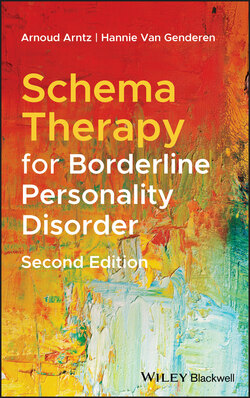Читать книгу Schema Therapy for Borderline Personality Disorder - Hannie van Genderen - Страница 20
Sample dialogue with a patient in the protector mode
Оглавление(In this example and following dialogues, “T” is therapist and “P” is patient.)
T:
How are you doing?
P:
(with no emotion) Good.
T:
How was your week, did anything happen that you would like to talk about?
P:
(looks away and yawns) No, not really.
T:
So, everything's OK?
P:
Yeah, everything's OK. Maybe we could have a short session today?
Should simple methods of avoiding painful emotions prove ineffective, she may attempt other manners of escape, such as substance abuse (such actively soothing emotional pain is called a self‐soother mode), self‐injury (physical pain can sometimes numb psychological pain), staying in bed, dissociation or attempting to end her life. BPD patients often describe this mode as an empty space or a cold feeling. They report feeling distanced from all experiences while in this mode, including therapy.
If the patient is not successful at keeping people at a distance, she can become angry and cynical in an attempt to keep people away from her. It is important for the therapist to recognize these behaviors as forms of protection and not be put off by them. If this angry–cynical state is very pronounced, it can be distinguished as a separate “angry protector” mode. The patient could even attack the therapist (the bully and attack mode) or she can disagree with the therapist in a condescending way (the self‐aggrandizer).
It is sometimes difficult to distinguish the angry protector or bully and attack mode from the punitive parent, especially during the initial stages of the therapy. One manner of distinction is to observe the direction of the patient's anger. While the angry protector's anger is directed toward the therapist (or someone else), the punitive parent's anger is directed toward the patient herself. If the therapist is unsure of the mode he is presented with, he can simply ask the patient if she is able to disclose which “side” of her personality is currently active.
